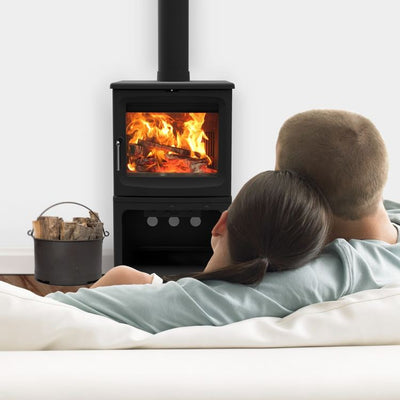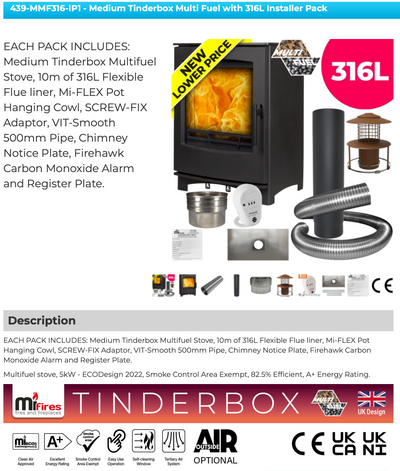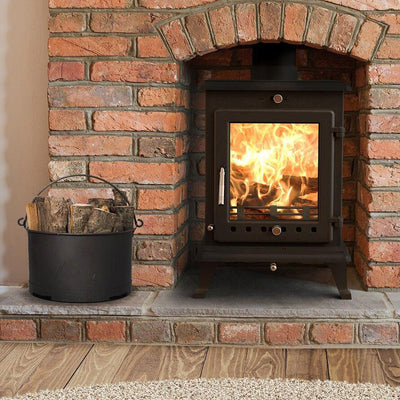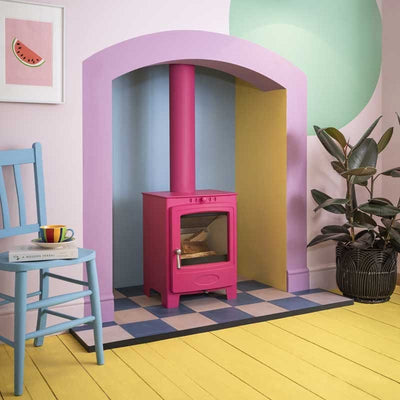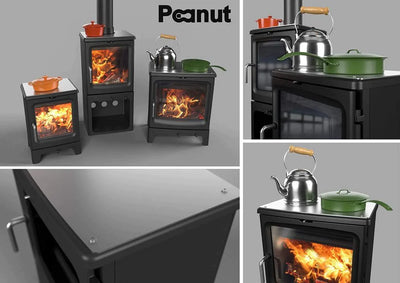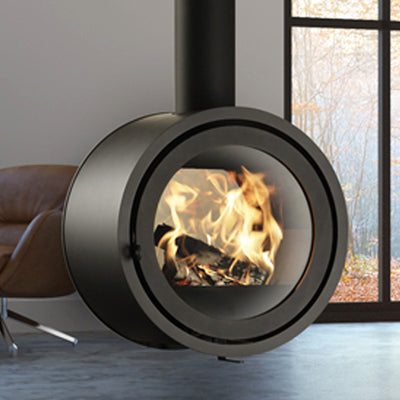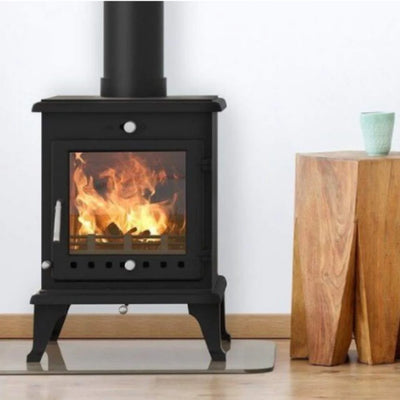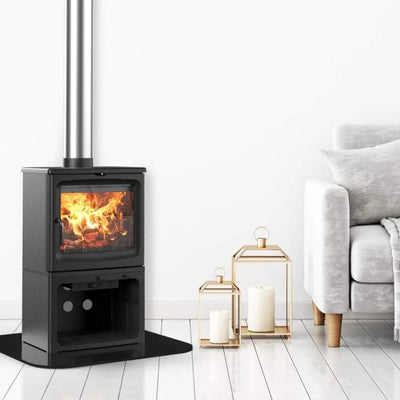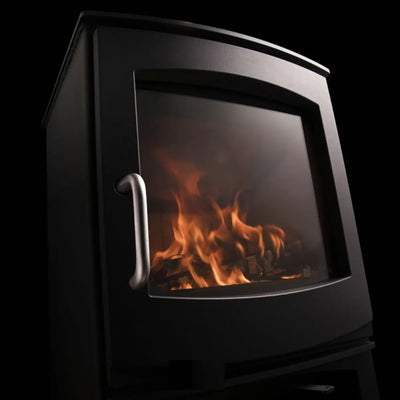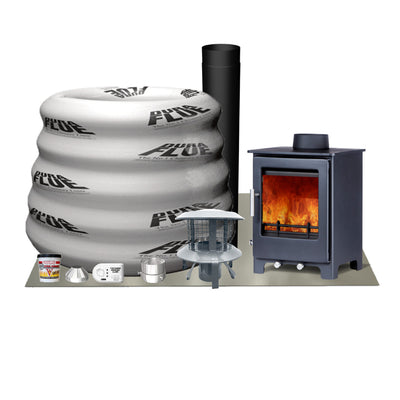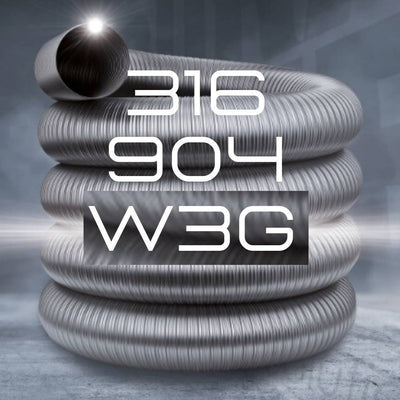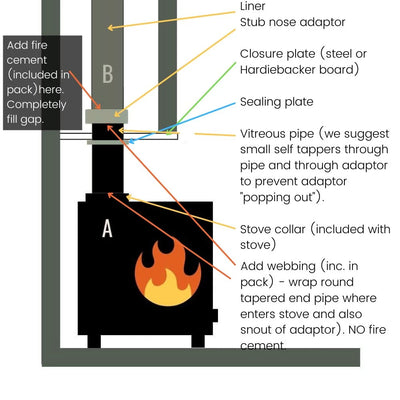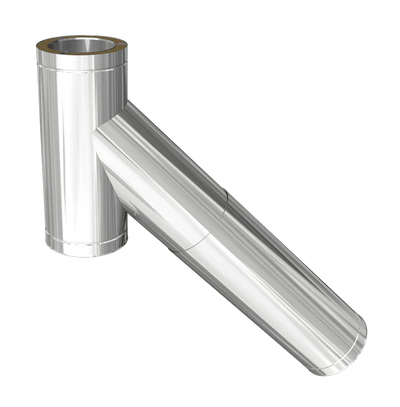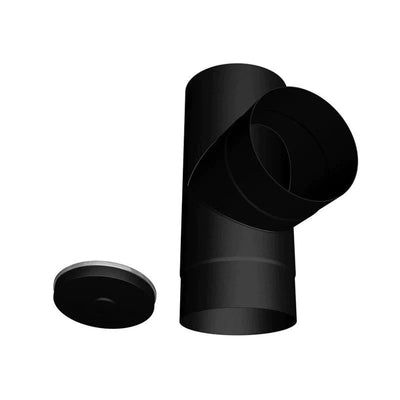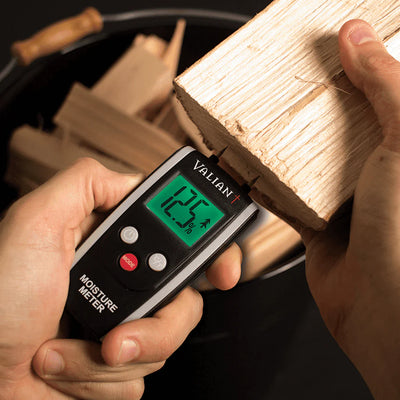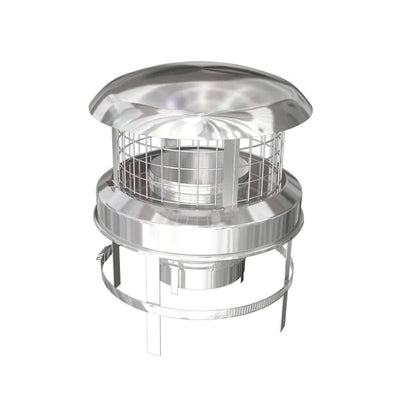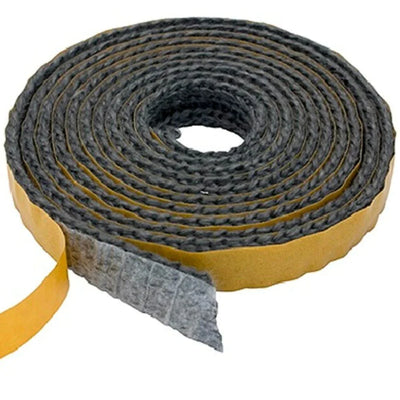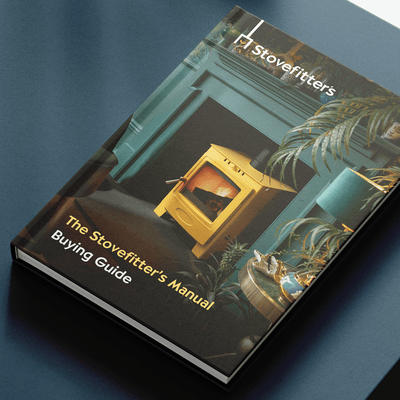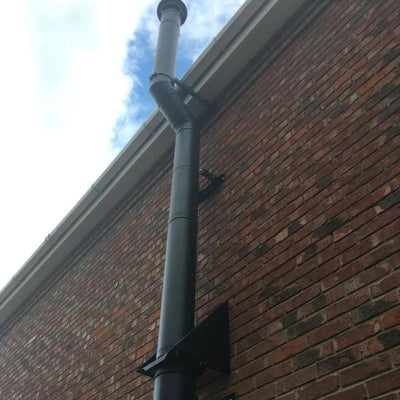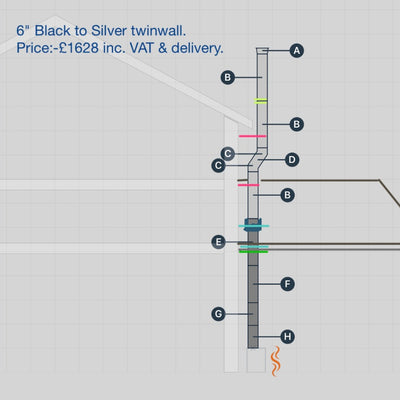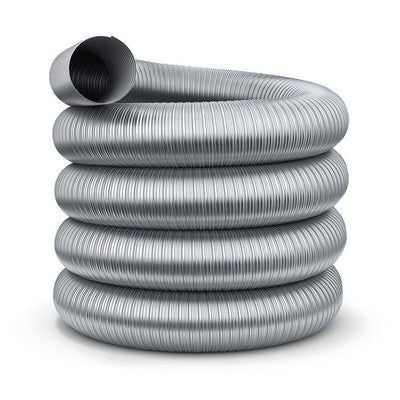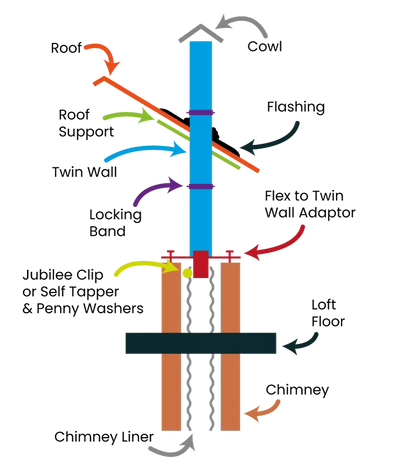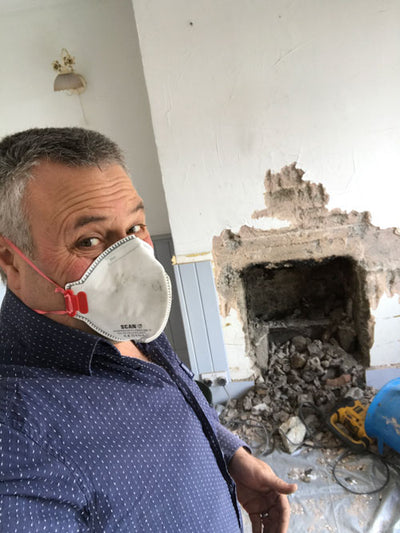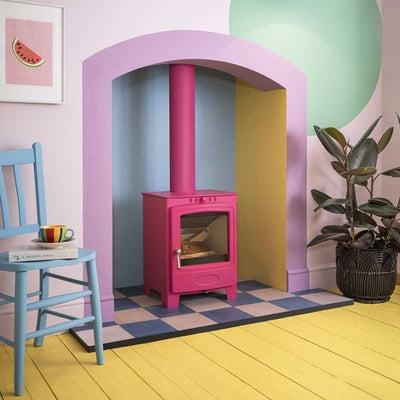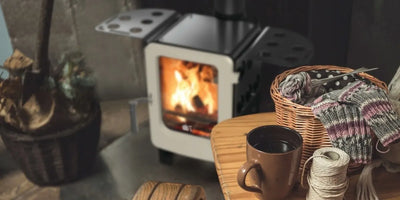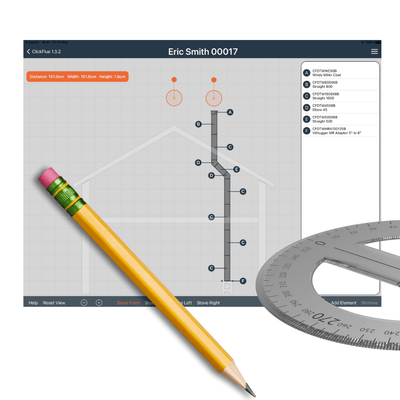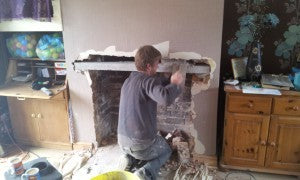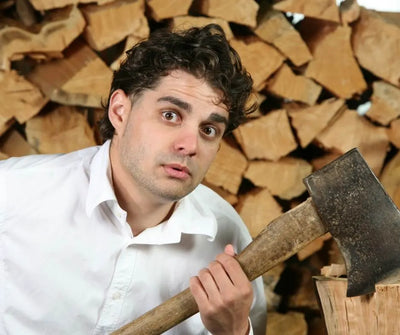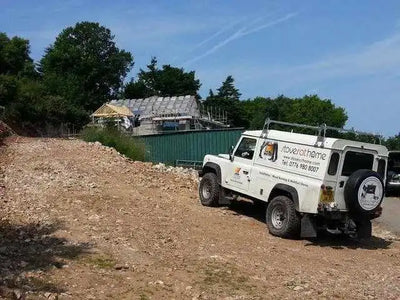Can I fit a 5″ chimney flue liner?
5 mins
Can I fit a 5″ chimney flue liner?
The short answer
If a stove has a 5″ collar and the stove manufacturer does not say otherwise then, as long as you stick to smokeless fuel, you CAN fit a 5″ chimney liner regardless of whether you are in a smoke control area. Not a lot of people know that.
If you want to burn wood then fit a 6″ chimney liner - or choose a “DEFRA exempt for wood” certified stove and fit your 5″ liner (as long as manufacturer does not say otherwise). In a smoke control area a stove must have DEFRA approval anyway.
Note: If burning smokeless fuel always choose 904 grade chimney liner over the cheaper 316 chimney liner.
The long answer
Chimney liner can be purchased in a variety of diameters: 5″, 6″, 7″, 8″, 9″. Rarely will a fitter be fitting anything other than 5″ or 6″.
1. A chimney liner must be 6″ diameter minimum, due to Building Regulations. However, a rule allowing 5″ chimney liners was added to Building Regulations in October 2010 – see (3.) below.
2. A chimney liner must never be of a lesser diameter than the flue size requirement stated by the manufacturer. So if a stove manufacturer states that the stove requires a flue diameter of 7″, then a 7″ liner must be fitted. A stove having a five inch collar (to fit a 5″ pipe) does not necessarily mean that a 5″ chimney liner can be used.
Warning
Never step down in size anywhere on the flue route as this will cause a bottleneck and the smoke may back up, eventually filling from the stove (and it's illegal). For example, if a stove has a 6" collar it cannot have a lesser diamter flue size.
3. If the stove has a 5″ collar or smaller and the stove manufacturer does not state otherwise** then, if you only wish to burn smokeless fuel, a 5″ liner can be fitted to any stove. If you wish to burn wood you must fit a 6″ liner UNLESS the stove has DEFRA exempt status for wood (many nowadays have) AND the stove manufacturer does not state otherwise.
** The best way to check this is to download the manufacturer’s fitting instructions from the Internet. This is the document delivered with the stove and the document that a Building Control officer will likely peruse.
* The correct term is “DEFRA exempt” e.g. “The following appliances are exempt from the Clean Air Act when using the specified fuels…”. I use the term DEFRA-approved sometimes because that is the term that the general public and others in the trade use. Some manufacturer’s use terms like “cleanburn” or “eco-burn” OR “smoke exempt”, As with all such terms check exactly what they mean and do not just “assume” an eco sounding phrase has anything to do with DEFRA.

Some chimneys require scaffolding (the householder went to take a look at the chimney but fear prevented him climbing past the guttering :)
Manufacturer's clarification
The following is an email correspondence I had with a well-known stove manufacturer a few years ago (I have the original):
Me,
Hi, I am putting together a list, for my prospective customers, of DEFRA approved stoves that can be attached to a 5″ flexible liner. This list is for situations where the chimney will not take a 6″ liner (is obvious it will not or we have tried and failed). I tend to favour these stoves for customer recommendations as they provide a backup should the chimney prove difficult for a 6″ liner.
I know that building regs allow this on a DEFRA approved stove with a 5″ inch collar but also that manufacturer’s instructions override this if a larger diameter is stated. I have your documentation (Supplementary Operating Instructions for use…) and this states that a chimney must have a diameter of not less than 150mm.
Can any of your stoves be added to a 5″ flexible stainless liner?
Kind regards,
Julian Patrick
Manufacturer reply
Dear Sirs
The installation of a XXXX Stove which meets the requirements of the Clean Air Act (DEFRA approved: Julian) and having a 125mm flue collar (Please see product list below) in conjunction with a 125 mm diameter chimney liner suitable for use with biomass solid fuels is permitted and should not present an unsafe situation providing:
1. The construction and integrity of the flue system is sound and fit for purpose.
2. The stove is correctly installed and operated in accordance with the manufacturers instruction and burns approved smokeless fuels or well seasoned wood having a maximum moisture content no greater than 20%.
3. The flue space and chimney liner is regularly inspected and maintained
4. It is recommended that an inspection is carried out at least once each year, but may require more frequent intervals depending on the installation, fuel and usage of the appliance (inspections usually by the sweep: Julian)
With the exception of the UK market it is common practise to install appliances manufactured with 125mm compatible flue collar to chimney systems with a 125mm internal diameter. Furthermore it is likely a stove designed with a 125mm compatible flue collar will operate better when installed with a chimney liner of the same diameter. I trust this information clarifies the situation, should you require any further assistance please do not hesitate to contact me. Kindest regards Name supplied Technical Service Manager XXXX UK Ltd.
Installer's preference
First of all I always install 904 chimney liner rather than the cheaper 316 6" chimney liner. At Stovefitters our liner of choice is Silvacore chimney liner made for Stovefitter's Warehouse in the Duraflue factory.
Some manufacturers or installers will still “recommend” 6″ chimney liner even if all criteria for 5″ liner are met. A small minority might even state in the fitting instructions that a 6″ liner still must be used. They will often do this because there is more room for error if a person does not have their chimney swept as often as they should – a heavily soot-coated liner obviously loses internal diameter so a larger diameter liner will last longer between sweeps. Having said this, if you burn well seasoned wood at and do not slumber the stove for long periods there will be no soot (my work colleague sweeps his own stove and reports zero soot for the last five years).
Only smokeless fuel and seasoned wood should be burned on a DEFRA approved stove if one is to comply with regulations. And coal is smelly, dirty, soot creating and not environmentally friendly so don’t use it ;)
In my own experience stove manufacturer’s were initially cautious about 5″ liners, I believe because they worry that we will not have them swept regularly enough.
As a stove fitter 5″ liners are wonderful, as they rarely ever get stuck whilst inserting them into chimneys. For 6″ liners about 33% are a pig to fit, another 25% will not fit down the chimney without having to open up the chimney and the rest are okay (however, they are much heavier and more unwieldly for fitting purposes than 5″). Five inch liners slip happily down in 90% of cases and are far easier to manhandle.
Tip: Unless your chimney is obviously large enough for a 6″ (some chimneys are huge and some you can even see bottom to top) then I suggest you consider the 5″ DEFRA route – especially if the flue is narrow with bends.
Update Fri 23 Aug 2013: Today I spoke to a rep who informed me that at least one large stove distributor has had problems fitting their stoves to 6″ liners (when the collar of the stove is 5″). Basically the stoves have underperformed and the company now insist on a 5″ liner. Modern stoves are very efficient so less heat rises up the chimney and it is heat that increases draft.
I have never had to break open a chimney to assist a 5″ liner round a bend but have done many times with 6″. BUT CHECK FIRST THAT YOUR STOVE MANUFACTURER ALLOWS IT.
Installation options
If my chimney will obviously accept a 6″ liner but I can also legally fit a 5″ liner – which should I choose?
Option 1: fit the 5″. This is what I would do. As the man from the above mentioned manufacturer says “it is likely a stove designed with a 125mm compatible flue collar will operate better when installed with a chimney liner of the same diameter”. I would only not be happy if I knew that the stove owner/operator often burned damp wood and/or rarely bothered having the chimney swept.
Option 2: fit the 6″. I would be happy with the 6″ and see no issue with doing this. I have however a slight concern that a few modern stoves may not perform “as well” with a 6″ liner.
Option 3: Call the manufacturer and ask the question. My only problem with this is that I think it depends on who answers the phone as to what answer you will get. One can use ones own judgement of the confidence of the person on the other end of the phone.
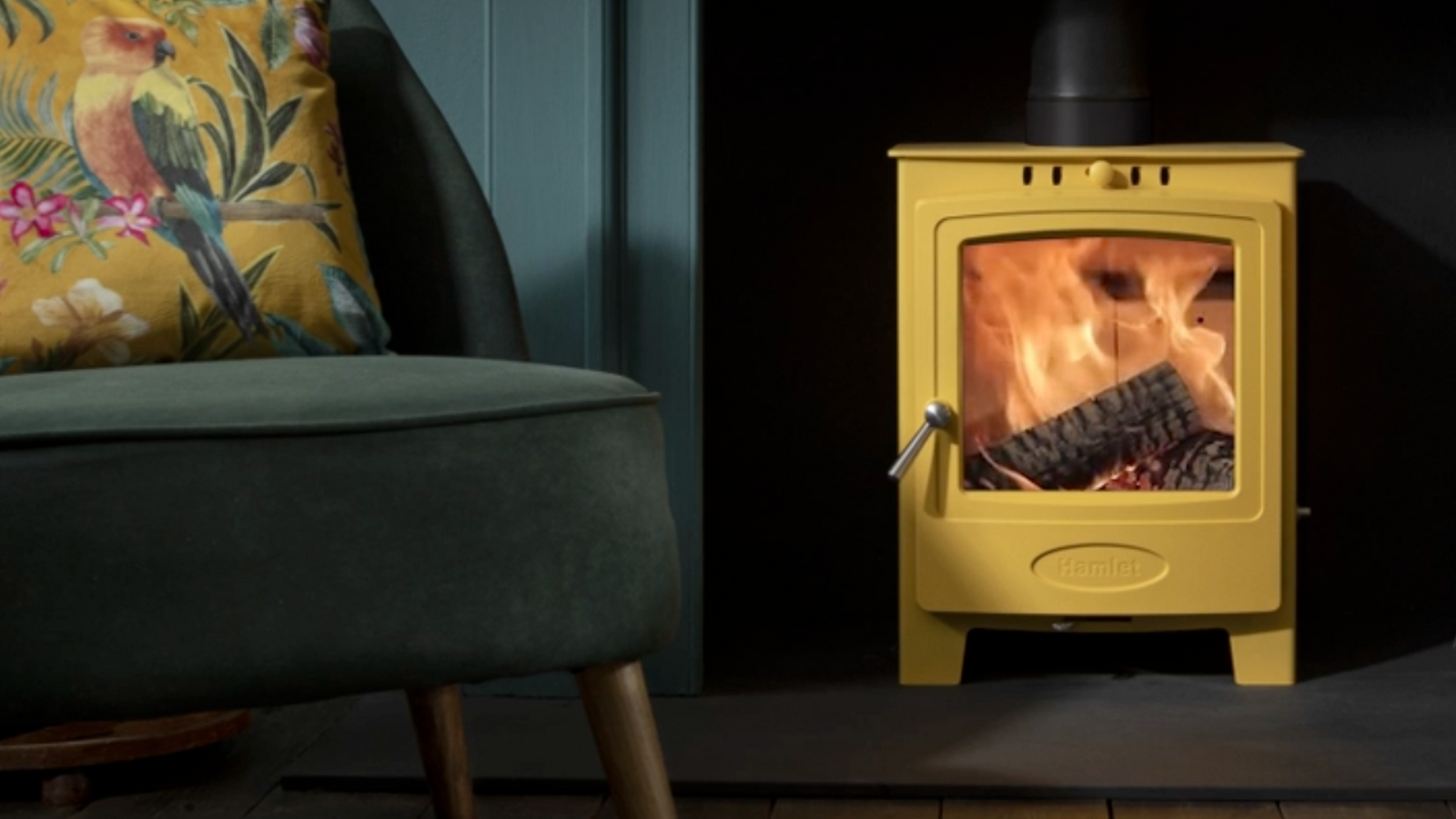
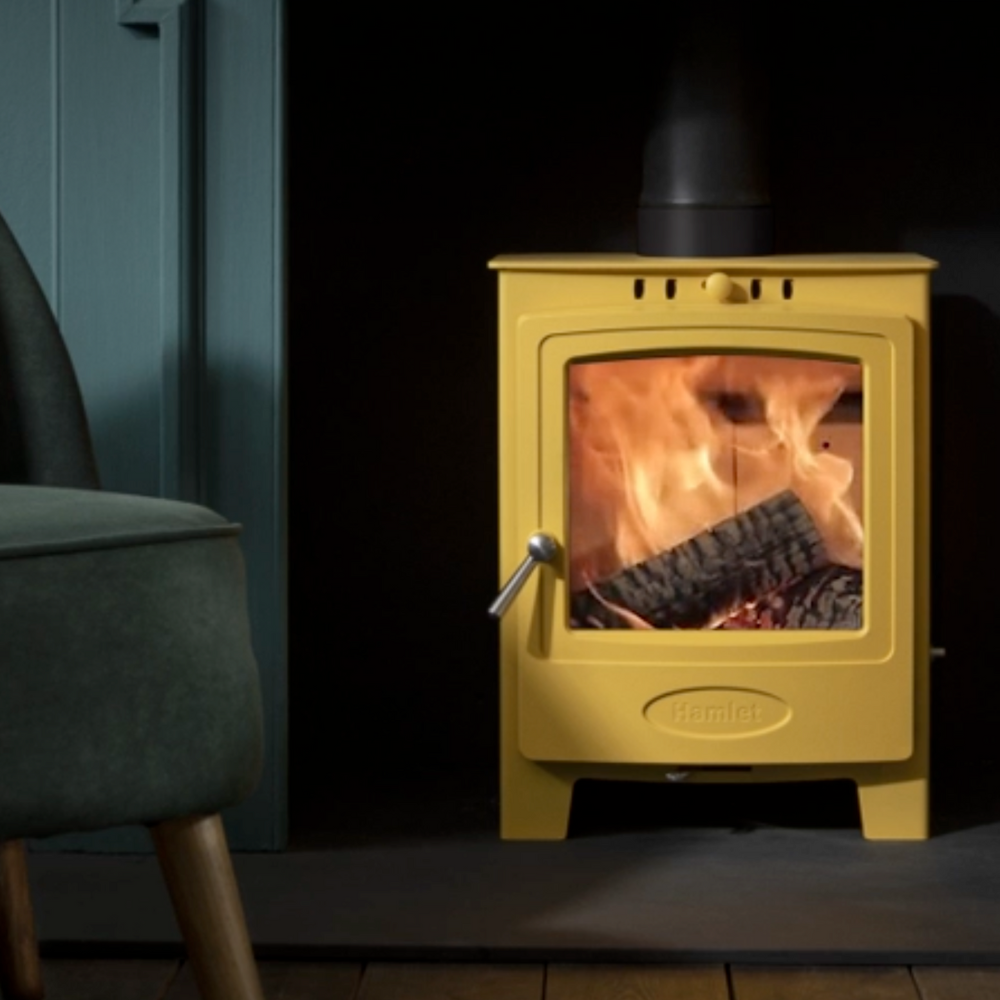
How to choose chimney liner & how much to buy


Installing a stove in a fireplace - what do I need?
FAQs
See all FAQsCosts correct as of April 2023:
Approx. costs if you have a chimney and fireplace ready to use: £750-£1,000 (save £500 by self-installing).
Approx. costs if you have a chimney but need the fireplace "opening up": £1,600-£2,200 (save £1200 by self-installing).
Approx. costs if you do not have a chimney and need a clip-together flue: Shed £475-£700. Bungalow £1500. 2-storey house £2500. Save £1,000-£1400 by self-installing.
Above figures include labour and materials but no appliance.
We, of course, advise you to purchase your stove and materials from Stovefitter's to ensure quality goods are installed (some installers use budget materials to increase margin). If you buy your stove from us (rather than your local small shop or installer) we have a lot more power when approaching manufacturer's with a warranty issue. Why is that? Because we buy many hundreds of stoves a year from these brands.
We do not fit stoves.
But we know a few who do!
Google: Hetas installers
Hetas are the trade body of registered UK installers.
Most installations will require that you slide a chimney liner down your chimney (flexible metal tube 5" or 6" in diameter). Do you have a narrow chimney and want to lessen the risk that a liner might not go down your chimney? Then make sure your chosen stove can use a 5" liner.
Must I line my chimney? Best read this article but most likely the answer is yes. Do I have to fit a chimney liner?
DEFRA-Exempt wood burning stoves with a 5″ collar can usually be fitted to a five inch liner rather than the usual 6″ minimum, making the installer's job much less stressful.
ALL OF THE 5KW STOVES WE SELL CAN BE FITTED TO A 5" CHIMNEY LINER.
I seriously suggest any self installer fits a 5" liner unless they know their chimney is large enough for a 6"!
What is the best chimney liner? Choose 904 chimney liner over the cheaper 316 chimney liner is our advice. Silvacore 904 (we sell it so of course we will say that ;-). What is the best chimney liner?
Useful links
Will your stove require an air vent within the room (some stone walls are very difficult to drill)?
5kW or under and wood burning stoves often do not require an air vent (new builds always require an air vent).
Useful links
What is the maximum output in kW of your "5kW" wood burning stove? The majority of manufacturers just specify the “nominal output” and this figure means very little in real life. The nominal is a figure the manufacturer chooses to sell the stove at - the stove is capable of reaching at least this output with one fuel load. Nominal means "capable of". But it is not the maximum.
Check out the size of the area where the logs will go (firebox size) as this varies enormously. The kW output is completely dependant on the amount of logs burning at any one time - more logs burning equals more heat. If you can fit three logs in stove A and just two logs in stove B then stove A will be capable of throwing out 33% more heat.
DO NOT TRUST MANUFACTURERS’ kW RATINGS as manufacturers specify what output they desire to sell the stove at and testing allows for much “playing with the figures”. This is why you can get very small 5kW stoves (e.g. Aga Little Wenlock) and very large 5kW stoves (e.g. DG Ivar 5 by Dik Geurts which is actually rated 5kW but has a MUCH larger firebox than the Ekol Crystal 5 by Ekol Stoves). A Crystal 5k might get to 5kW and not be capable of any higher whilst a DG Ivar, despite being rated at 5kW, can get to 8kW with a full fuel load.
Note that, over time, one might damage the internal firebricks of a stove by running at a higher load than the manufacturer's suggest. Firebricks are easily replaceable.
Useful links
Will your wood burning stove fit in your recess WITH the required air gaps around it? This is obviously not an issue if your stove will be freestanding.
Air gaps to non-combustible materials (brick, stone etc.) are usually "as close as you like" legally but manufacturers will sometimes specify a recommendation. This recommendation is there to allow heat to escape from the recess into the room - so you get the heat benefit rather than the heat soaking into the building structure and being lost. If no gap to non-combustibles recommended then we suggest 50-100mm air gap left and right of stove, 50mm behind and 100mm above.
Are you in a Smoke Control Area (usually built up areas)?
Choose your stove accordingly.
A stove must be DEFRA-Approved if you wish to burn wood in a smoke control area.
ALL OF THE STOVES WE SELL ARE DEFRA APPROVED FOR SMOKE CONTROL AREAS.
In simple terms if a stove has an efficiency rating of 70% then 30% of the heat from your logs goes up the chimney.
If a stove has an efficiency rating of 90% then only 10% goes up the chimney.
So think of this in terms of how many logs you have to chop/buy.
Example: A Saltfire Peanut 5 by Saltfire Stoves in Dorset has an efficiciency of 80%.
A tall chimney (6m or more) that is lined will be happy with an efficient stove.
Efficiency importance can be said to be overrated and anything between 75% and 85% is fine. Go much higher and performance can actually suffer (smoke in room when opening door to reload, blackening of glass).
Many modern stoves can go on 12mm thick hearths. Others require full, 5″ thick constructional hearths. All of the stoves we sell state whether or not a 12mm hearth is suitable.More about hearths for wood stoves here.
Helpful links
Can you can talk to somebody on the phone should you need to after the wood burning stove has been delivered, especially if you are self installing? Will the staff at “wesellzillionsofstoves.com” be able to assist with any installation issues? What if there are any problems after install?
Do yourself a favour before ordering stoves or materials on the Internet: Go to Trustpilot and type in the company name before you buy. Some companies advertising at the top of search engines are not good news - check for yourself.
When striving to find thebest 5kW wood burning stovesyou will likely be bewildered by the choice. There are many to choose from. The question I get asked most in our shop is “why should I pay <£1,000> for this one when this other one is just <£500>?”. Here is the very simple answer:the cheaper wood stoves are made in Chinaor Eastern Europe whilst the more expensive are made in Western Europe (or sometimes the USA). Here are a few examples where a more expensive stove might excel over a cheaper stove:
- Aesthetics (more time spent on design)
- Hinges (sometimes hidden on more expensive stoves)
- Better quality glass
- Thicker steel (longer life)
- Improved door locking mechanisms
- Longer warranty
- Improved controllabilty of flame due to more resource invested on design of air flow within stove
- Brushed steel fittings instead of cheapy chrome look
Open and close the door on a cheap Chinese stove. Then open and close the door on a DG stove, Arada stoves, Woodford stoves, Hamlet stoves or Saltfire stoves. You’ll understand the difference.
Stove pricing reminds me of wine pricing. A £20 bottle of wine is not double the quality of a £10 bottle of wine (the drinking experience might be improved by 20% as an example). We are talking “the law of diminishing returns here. They are all “fire in a metal box” at the end of the day.
Yes. However, there are specific regulations and restrictions in place to address air pollution concerns, particularly in areas designated as Smoke Control Areas. In these areas, only approved "smokeless" fuels or exempt appliances, such as Defra-approved wood-burning stoves, can be used. These stoves are designed to burn wood more efficiently and produce fewer emissions.
All the stoves we sell are DEFRA approved and Eco-design approved and suitable for all areas of the UK.
Terminology
View all TerminologyA stainless steel tube, slides down a brick/stone chimney to provide a smooth and safe route for smoke.
All of our stoves are approved by DEFRA to burn wood in all UK locations including Smoke Control Areas (towns and cities). Not all stoves are, so be careful if buying elsewhere.
All of our stoves are ECODESIGN approved to be sold in the UK. Not all stoves are, so be careful if buying elsewhere. ECODESIGN is mandatory by law since January 2022.
The base your stove sits on.
If the chimney is the polo mint then the flue is the hole.
More buying guides
View All
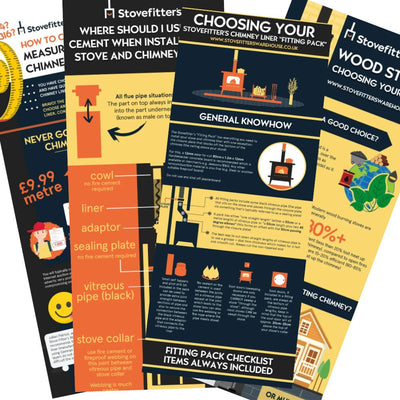
How to choose a wood burning stove for your property (includes infographic)
Infographics

What size wood stove do I need? Don't let manufacturers fool you!
Buying Guides
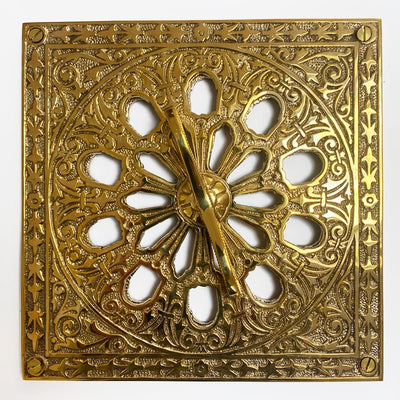
Do I need an air vent for a wood burning stove? If I do not bother?
Buying & DIY

Knowledge Tree: Process of buying and installing a wood burning stove
Buying & DIY
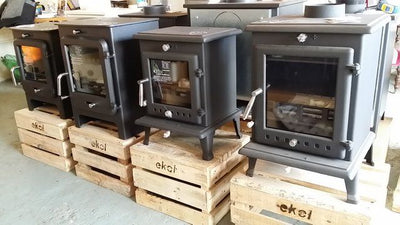
Chinese wood burners – should I buy one or are they all crap?
Buying Guides

What else do I need to buy to install a wood burning stove?
DIY Guides

Infographics for wood burning stove purchase and install
Infographics
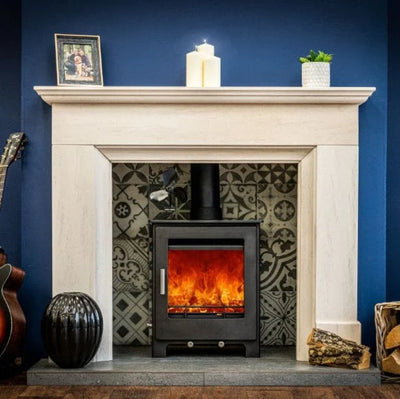
Wood burning or multifuel stove? A stove fitter decides.
Buying Guides
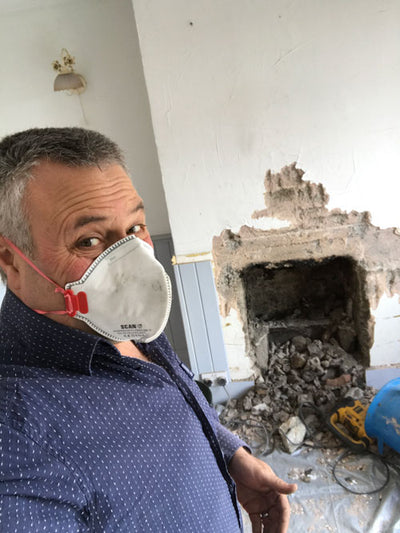
A few words from Julian
Buying & DIY
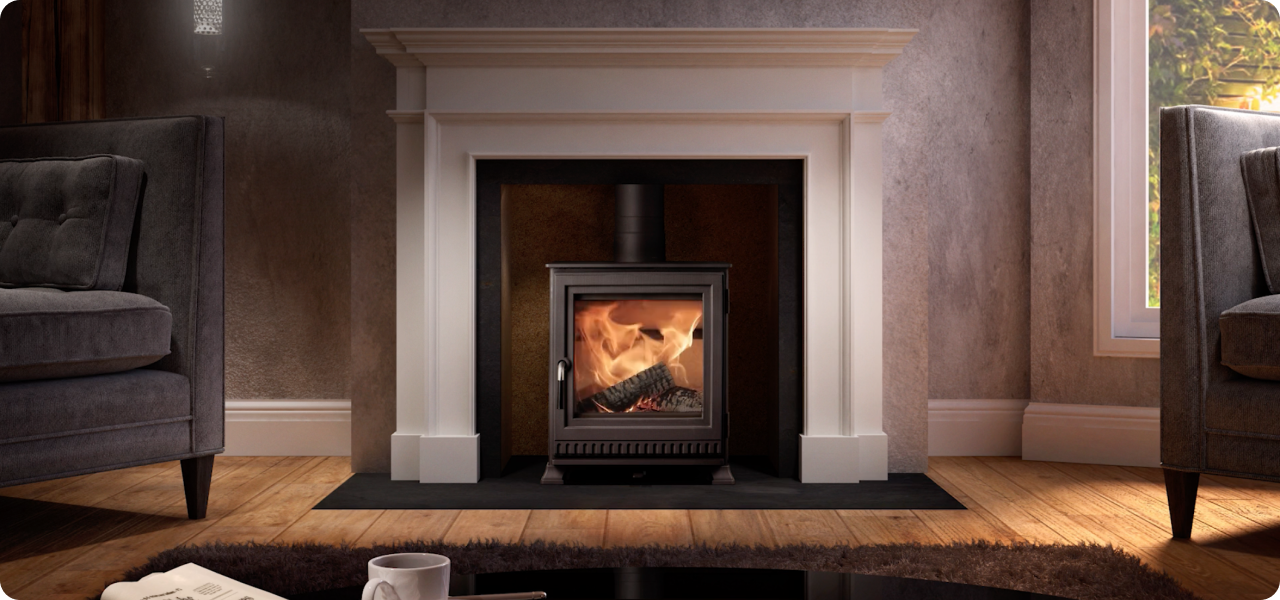
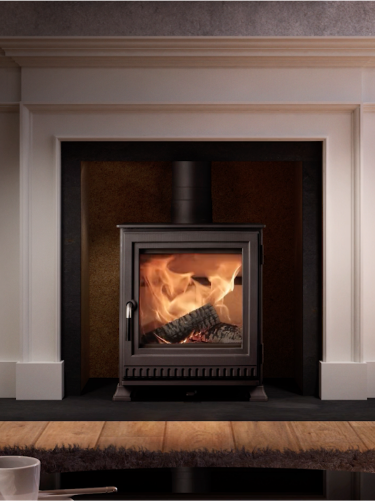
Find my perfect stove
Answer 3 simple questions and we will show you the best Stoves for your space.

